What Role Do National Parks Play in Conservation?
National parks are more than just beautiful landscapes; they are essential guardians of our planet's biodiversity and natural heritage. These protected areas serve as vital sanctuaries for countless species, ensuring that ecosystems remain balanced and resilient amidst the pressures of climate change and human activity. Imagine stepping into a national park and being enveloped by the sounds of chirping birds, rustling leaves, and flowing streams. This vibrant environment is not just a feast for the senses; it's a crucial part of a larger system that supports life on Earth.
One of the most significant roles of national parks is their contribution to biodiversity conservation. Biodiversity refers to the variety of life forms on Earth, including the different plants, animals, and microorganisms that share our planet. National parks act as safe havens for these species, providing them with the habitat they need to thrive. By protecting these natural areas, we also safeguard genetic diversity, which is essential for adapting to changing environments. Think of it this way: just as a diverse group of friends can tackle problems from various angles, a diverse ecosystem is more resilient to challenges like disease, climate change, and habitat loss.
In addition to preserving biodiversity, national parks offer a plethora of ecosystem services that benefit both nature and humans. These services include clean water, air purification, and soil stabilization, all of which are crucial for maintaining a healthy environment. For instance, forests within national parks filter pollutants from the air and water, ensuring that local communities have access to clean resources. By understanding these benefits, we can appreciate the importance of conserving these natural areas not just for wildlife but for our own well-being and that of future generations.
Biodiversity is crucial for ecosystem resilience. National parks serve as sanctuaries for various species, helping to maintain genetic diversity and ecosystem health, which are essential for survival in changing environments. In a world where habitats are being destroyed at an alarming rate, national parks stand as a bulwark against extinction. They are the last bastions where endangered species can find refuge and thrive. For example, parks like Yellowstone and Yosemite are home to unique flora and fauna that cannot be found anywhere else on the planet.
National parks offer essential ecosystem services, such as clean water, air purification, and soil stabilization. Understanding these benefits highlights the importance of conserving these natural areas for future generations. The services provided by national parks can be summarized as follows:
- Clean Water: Parks protect watersheds, ensuring that water sources remain uncontaminated.
- Air Quality: Trees and plants in parks absorb carbon dioxide and release oxygen, improving air quality.
- Soil Health: National parks prevent soil erosion and maintain nutrient-rich soils that support diverse plant life.
National parks play a significant role in water conservation by protecting watersheds and maintaining water quality. They help regulate water flow, which is vital for both wildlife and human populations. For instance, parks like the Great Smoky Mountains are crucial for the water supply of nearby cities. The forests trap rainwater, allowing it to seep into the ground, replenishing aquifers and ensuring that communities have access to clean drinking water.
Wetlands within national parks are crucial for biodiversity and flood control. Their preservation is essential for maintaining the health of surrounding ecosystems and mitigating climate change effects. Wetlands act like natural sponges, absorbing excess rainwater and reducing the risk of flooding. They also serve as breeding grounds for various species, making them invaluable for maintaining ecological balance.
Sustainable forest management in national parks ensures the protection of trees and wildlife habitats. This practice supports carbon sequestration and helps combat climate change while providing recreational opportunities. By maintaining healthy forests, parks can absorb significant amounts of carbon dioxide, making them critical players in our fight against climate change.
National parks contribute to climate change mitigation by preserving carbon sinks and promoting research on climate resilience. They serve as living laboratories for studying ecological responses to climate change, enabling scientists to gather data that can inform global conservation strategies. By protecting these areas, we not only conserve wildlife but also equip ourselves with the knowledge needed to adapt to a rapidly changing world.
National parks foster community engagement and environmental education, helping to raise awareness about conservation issues. They encourage local populations to participate in conservation efforts and sustainable practices. By connecting people with nature, parks inspire a sense of responsibility for protecting our planet. This connection is vital for cultivating future generations of environmental stewards.
Volunteer programs in national parks provide opportunities for community members to get involved in conservation efforts. These initiatives enhance public awareness and foster a sense of stewardship for natural resources. Volunteers can participate in activities such as trail maintenance, wildlife monitoring, and habitat restoration, all of which contribute to the overall health of the park.
Educational outreach programs in national parks aim to inform visitors about ecology and conservation. These initiatives inspire future generations to appreciate and protect the natural world. Through guided tours, workshops, and interactive exhibits, parks create opportunities for learning that can spark a lifelong passion for nature.
Despite their importance, national parks face numerous challenges, including climate change, invasive species, and funding limitations. Addressing these issues is crucial for the continued effectiveness of parks in conservation efforts. As we move forward, it is imperative that we advocate for increased funding and resources to ensure that these natural treasures can thrive for generations to come.
- What is the main purpose of national parks? National parks aim to preserve natural environments, protect wildlife, and provide opportunities for public enjoyment and education.
- How do national parks help with climate change? They preserve carbon sinks, promote biodiversity, and serve as research sites for climate resilience.
- Can I volunteer in a national park? Yes, many national parks offer volunteer programs that allow community members to participate in conservation efforts.

The Importance of Biodiversity
Biodiversity is not just a buzzword; it's the backbone of our planet's health and resilience. Imagine a world where every species, from the smallest insect to the largest mammal, plays a crucial role in maintaining the balance of nature. National parks serve as sanctuaries for these species, offering a safe haven where they can thrive without the pressures of urbanization and industrialization. By preserving these natural habitats, we are essentially safeguarding the intricate web of life that sustains us all.
When we talk about biodiversity, we are referring to the variety of life forms on Earth, including genetic diversity, species diversity, and ecosystem diversity. Each of these components is vital for maintaining healthy ecosystems. For instance, a diverse ecosystem is more resilient to changes, such as climate shifts or disease outbreaks. It can adapt and recover more quickly, ensuring that the services it provides—like clean air and water—remain intact.
National parks play a significant role in maintaining this biodiversity through various means:
- Habitat Protection: By designating large areas as protected lands, national parks provide habitats for countless species, allowing them to live and reproduce in a safe environment.
- Genetic Diversity: Larger populations in protected areas are less susceptible to inbreeding, which can lead to genetic weaknesses. This diversity is crucial for the long-term survival of species.
- Ecological Balance: Predators, prey, and plant life all depend on one another. National parks help maintain these relationships, ensuring that ecosystems function properly.
Furthermore, the concept of biodiversity extends beyond just the number of species. It encompasses the interactions between these species and their environments. For example, plants provide oxygen and food, while animals contribute to pollination and seed dispersal. This interconnectedness means that the loss of even a single species can have a domino effect, leading to the decline of others and the overall health of the ecosystem.
In essence, national parks are like time capsules, preserving genetic diversity and ecological relationships that have developed over millions of years. They serve as living laboratories where scientists can study the impacts of environmental changes and human activities on biodiversity. By protecting these areas, we are not only conserving the beauty of nature but also ensuring that future generations can enjoy the same rich tapestry of life that we have today.
In conclusion, the importance of biodiversity cannot be overstated. It is crucial for the resilience of our ecosystems and, ultimately, for our survival. National parks are a vital part of this equation, acting as guardians of nature's diversity. By supporting and visiting these parks, we contribute to the ongoing efforts to protect our planet's precious biodiversity.
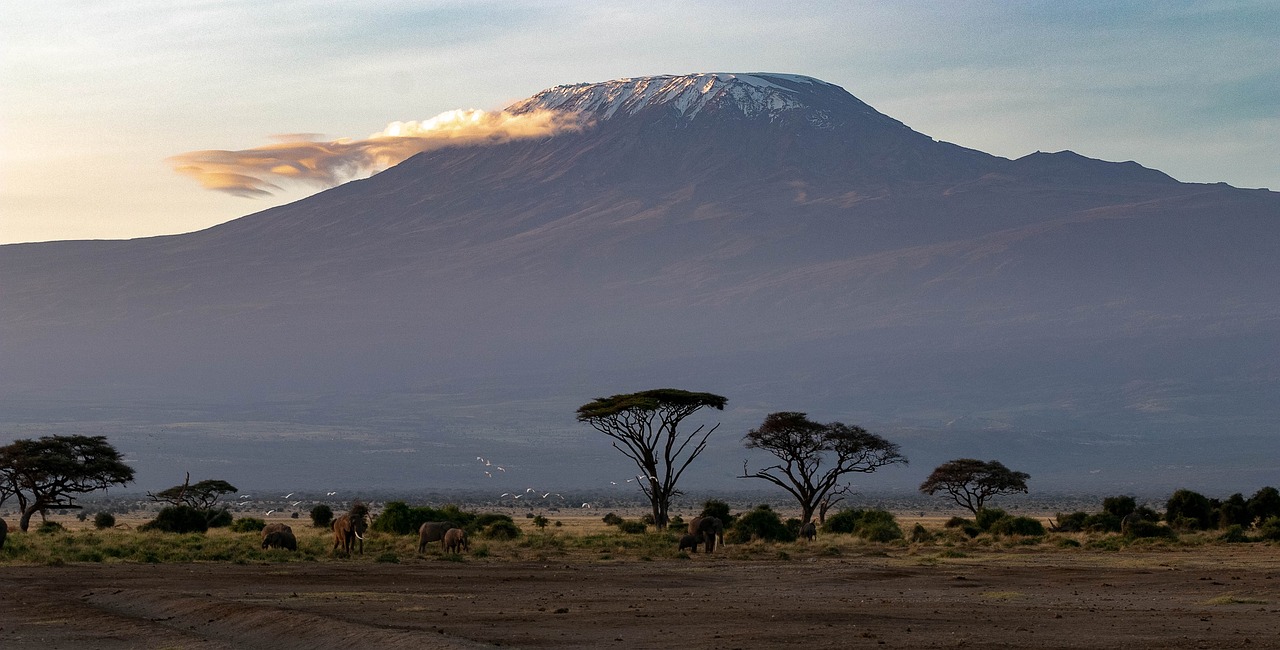
Ecosystem Services Provided by Parks
National parks are not just beautiful landscapes; they are vital ecosystems that provide a plethora of essential services to our planet. These services are often referred to as ecosystem services, and they encompass the various benefits that humans derive from nature. From purifying our air to regulating our climate, the functions of national parks are indispensable. Imagine them as nature's superheroes, tirelessly working behind the scenes to keep our environment healthy and thriving.
One of the most significant services that national parks offer is clean water. Parks play a crucial role in maintaining the quality and availability of water by protecting watersheds. These areas filter pollutants and sediments, ensuring that the water we drink is safe and clean. Moreover, by regulating water flow, national parks not only support wildlife but also provide essential resources for human populations. Think of it as nature's own filtration system, keeping our water sources pristine.
Another vital ecosystem service is air purification. Trees and plants in national parks absorb carbon dioxide and release oxygen, significantly improving air quality. This process is critical in combating the effects of pollution and climate change. In fact, a healthy forest can absorb up to 48 pounds of carbon dioxide per year for every tree! This means that by preserving our national parks, we are also preserving the air we breathe.
Additionally, national parks contribute to soil stabilization. Healthy ecosystems help prevent soil erosion, which is essential for maintaining agricultural productivity and preventing land degradation. The roots of trees and plants anchor the soil, reducing the risk of landslides and flooding. This is particularly important in areas prone to heavy rainfall, where the absence of vegetation can lead to catastrophic consequences.
To illustrate the importance of these services, consider the following table that highlights some key ecosystem services provided by national parks:
| Ecosystem Service | Description | Importance |
|---|---|---|
| Clean Water | Protection of watersheds and filtration of pollutants | Essential for human health and wildlife |
| Air Purification | Absorption of carbon dioxide and release of oxygen | Combats climate change and improves air quality |
| Soil Stabilization | Prevention of soil erosion and land degradation | Maintains agricultural productivity and ecosystem health |
In summary, the ecosystem services provided by national parks are crucial for maintaining the balance of our environment. They not only support biodiversity but also enhance the quality of life for humans. By understanding and appreciating these services, we can better advocate for the conservation of our national parks. After all, preserving these natural treasures is not just about protecting wildlife; it's about safeguarding our future.
- What are ecosystem services? Ecosystem services are the benefits that humans receive from nature, including clean air, water, and biodiversity.
- How do national parks contribute to climate change mitigation? National parks preserve carbon sinks, which help absorb carbon dioxide from the atmosphere, and they serve as research sites for climate resilience.
- Why is biodiversity important in national parks? Biodiversity ensures ecosystem resilience, which is essential for survival in changing environments and supports various ecosystem services.
- How can I get involved in conservation efforts at national parks? Many national parks offer volunteer programs and educational outreach initiatives that allow community members to participate in conservation efforts.
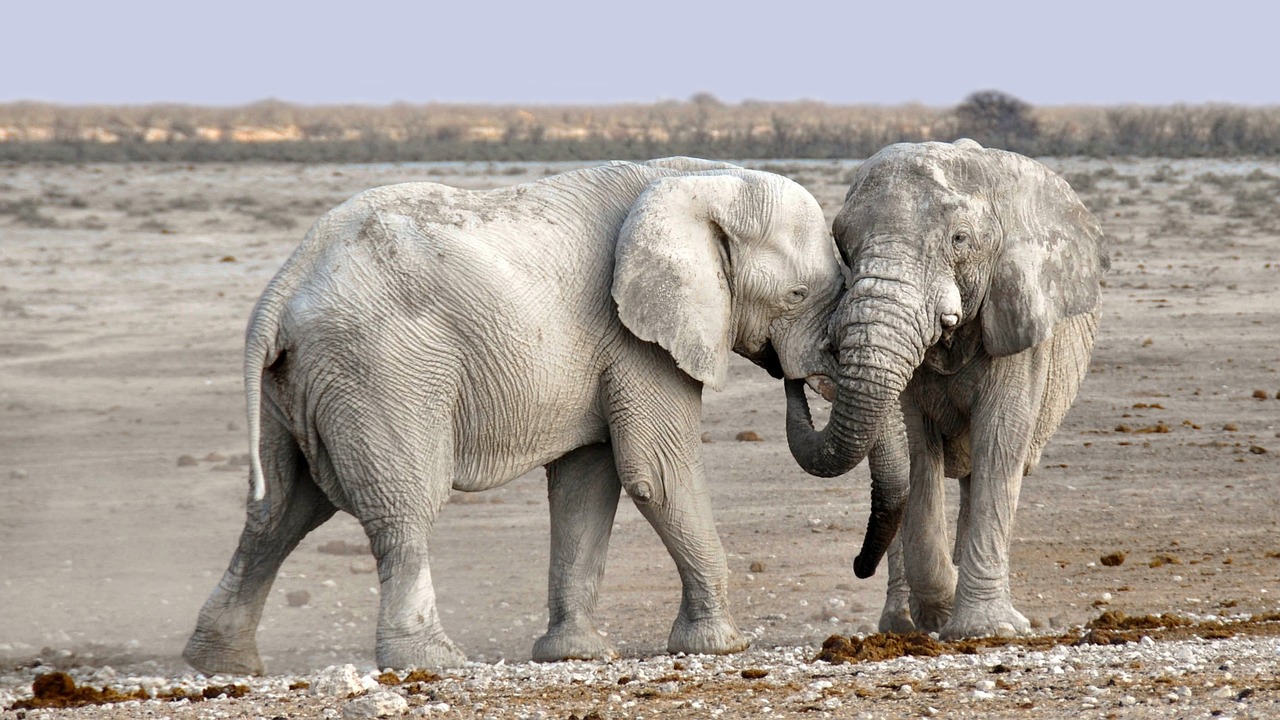
Water Conservation
Water is the lifeblood of our planet, and national parks play a pivotal role in conserving this precious resource. By protecting watersheds and ensuring clean water flows, these parks not only benefit wildlife but also support human populations. Imagine a world where rivers run dry or lakes become toxic—this is the reality we could face without the safeguarding efforts of national parks. They act as natural buffers, filtering pollutants and maintaining the quality of water that both ecosystems and communities rely on.
One of the most significant ways national parks contribute to water conservation is through their ability to regulate water flow. They act like sponges, absorbing rainfall and releasing it slowly, which helps to prevent flooding during heavy rains and ensures a steady supply of water during dry spells. This regulation is crucial for various species that depend on consistent water sources for survival, as well as for agricultural practices nearby. For instance, parks like Yellowstone and Yosemite not only preserve stunning landscapes but also protect vital watersheds that supply water to millions of people.
Furthermore, the wetlands found within national parks are essential for biodiversity and flood control. These unique ecosystems serve as natural water filters, trapping sediments and absorbing excess nutrients that could otherwise lead to harmful algal blooms. By maintaining healthy wetlands, national parks help mitigate the effects of climate change, as they store carbon and reduce the risk of flooding in surrounding areas. The preservation of these wetlands is not just beneficial for wildlife; it’s a crucial aspect of maintaining the health of our planet.
In addition to protecting natural water systems, national parks also engage in sustainable practices that promote water conservation. For example, many parks have implemented water-saving technologies in their facilities, such as low-flow fixtures and rainwater harvesting systems. These initiatives not only reduce the parks' ecological footprint but also serve as a model for visitors, demonstrating the importance of responsible water use. By educating the public about the significance of water conservation, national parks inspire individuals to adopt similar practices in their own lives.
In summary, national parks are indispensable allies in the fight for water conservation. They protect vital watersheds, regulate water flow, and preserve wetlands, all while promoting sustainable practices and educating the public. Without these natural sanctuaries, our water resources would be at greater risk, and the delicate balance of our ecosystems would be disrupted. So, the next time you visit a national park, take a moment to appreciate the role it plays in safeguarding one of our most essential resources—water.
- How do national parks help in water conservation? National parks protect watersheds, regulate water flow, and maintain wetlands, which are crucial for clean water and biodiversity.
- What role do wetlands play in national parks? Wetlands act as natural water filters, help in flood control, and store carbon, making them vital for both ecosystems and climate change mitigation.
- Can visitors contribute to water conservation efforts in national parks? Yes! Visitors can engage in responsible water use and participate in park-led conservation programs to help protect these vital resources.
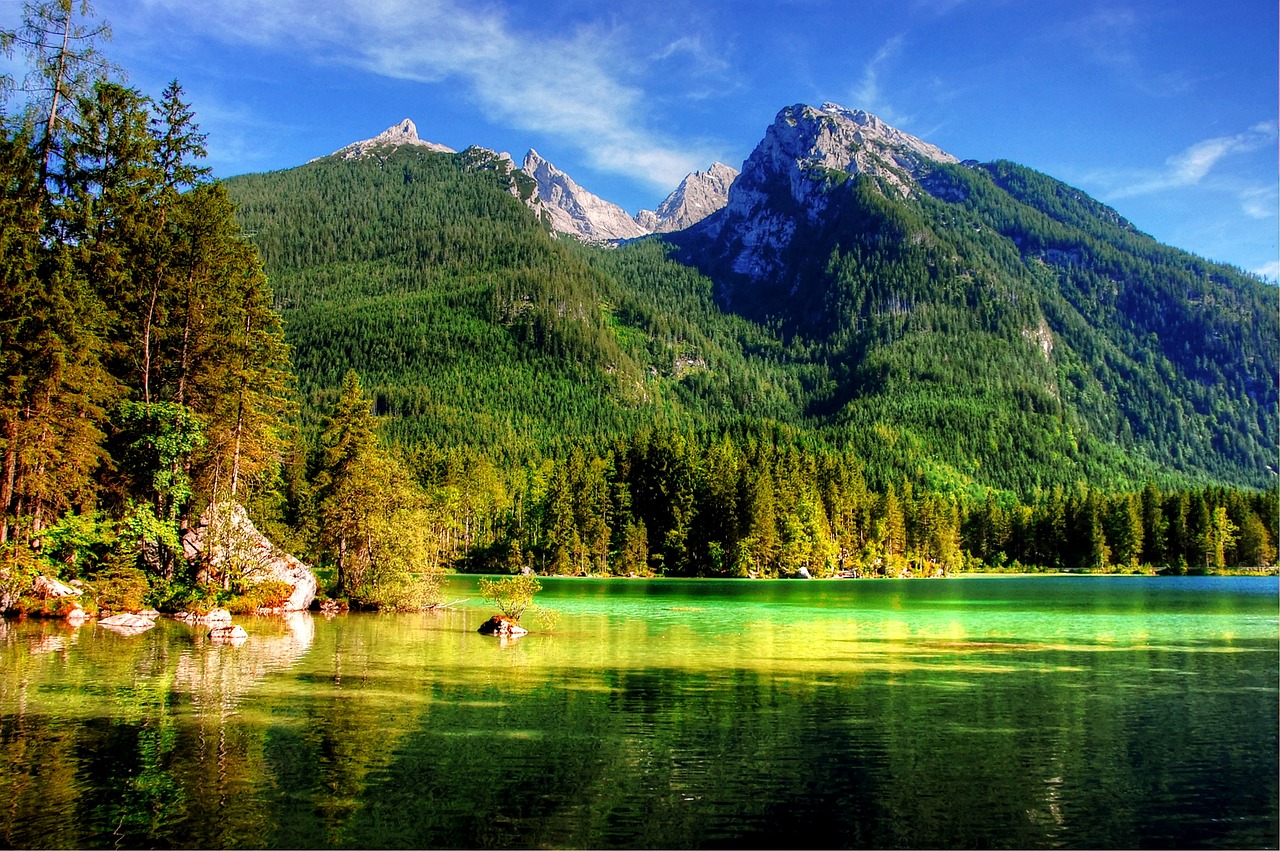
Wetland Protection
Wetlands are often referred to as the "kidneys of the landscape" due to their remarkable ability to filter pollutants and improve water quality. These unique ecosystems, found within national parks, are not just beautiful; they are vital for maintaining biodiversity and supporting a multitude of species. Did you know that wetlands provide habitat for over 40% of the world's plant and animal species? This statistic alone highlights their importance in the grand tapestry of nature.
Moreover, wetlands play a crucial role in flood control. They act like sponges, absorbing excess rainwater and slowly releasing it, which helps to prevent flooding in surrounding areas. This is particularly important in the face of climate change, where extreme weather events are becoming more frequent. In addition to flood mitigation, wetlands also help recharge groundwater supplies, ensuring that both wildlife and human populations have access to clean water.
However, despite their importance, wetlands are under constant threat from urban development, pollution, and climate change. National parks serve as protected areas that help safeguard these ecosystems from such pressures. By establishing and maintaining wetland reserves, parks can ensure that these vital areas remain intact for future generations. The protection of wetlands also contributes to carbon sequestration, as they store large amounts of carbon in their soils, helping to mitigate climate change.
In summary, the protection of wetlands within national parks is essential not only for the species that inhabit them but also for the broader ecosystem services they provide. By prioritizing wetland conservation, we are investing in a healthier planet and a more sustainable future.
- What are wetlands, and why are they important? Wetlands are areas where water covers the soil, either permanently or seasonally. They are crucial for biodiversity, flood control, and water purification.
- How do national parks help protect wetlands? National parks provide legal protection and management for wetlands, ensuring that they are preserved from development and pollution.
- Can I visit wetlands in national parks? Yes! Many national parks have designated wetland areas that are accessible to visitors, allowing for both education and enjoyment of these unique ecosystems.
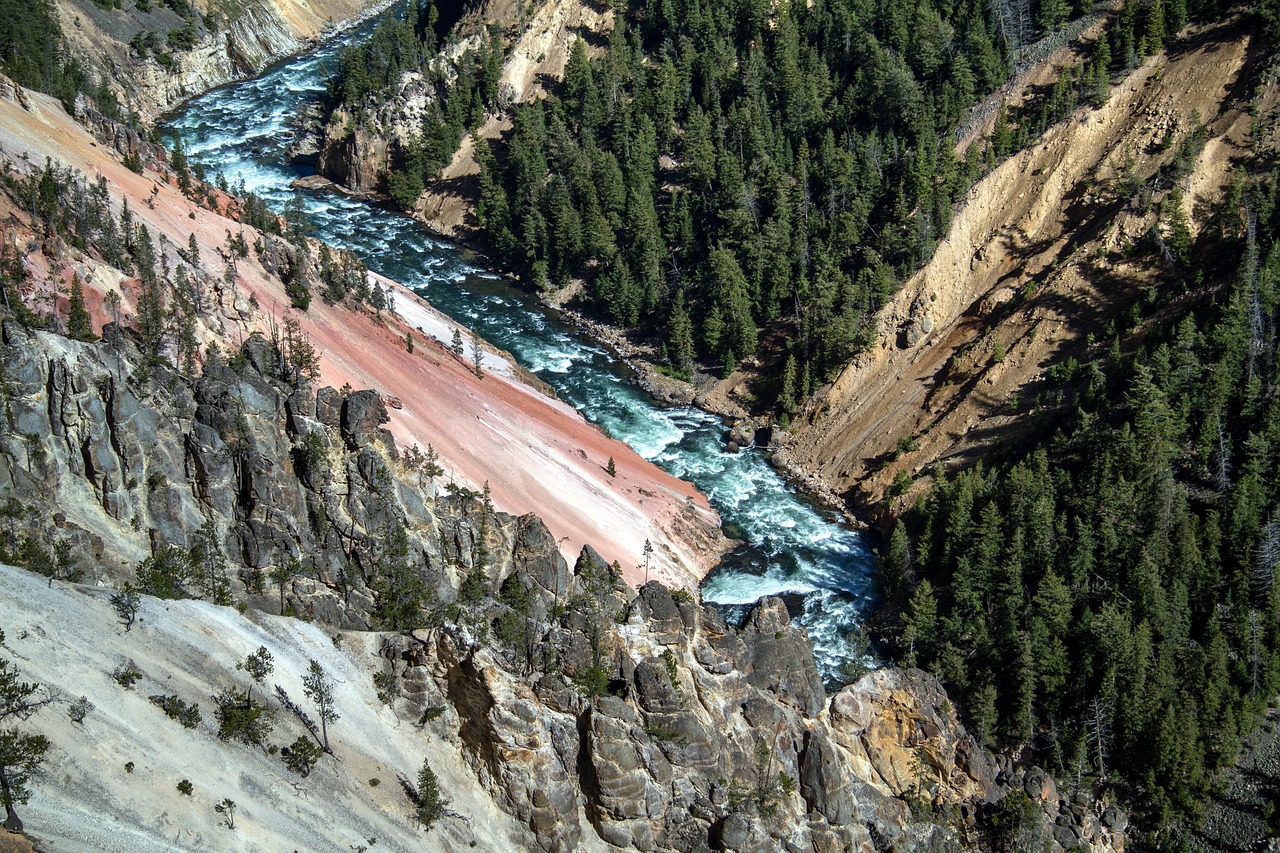
Forest Management
Effective in national parks is not just about preserving trees; it's about fostering a thriving ecosystem that benefits both wildlife and humans. Think of forests as the lungs of our planet—they absorb carbon dioxide and release oxygen, playing a crucial role in combating climate change. When we manage these forests sustainably, we ensure that they continue to provide these essential services for generations to come. This involves practices such as selective logging, controlled burns, and reforestation, which can help maintain the health of these vital ecosystems.
One of the primary goals of forest management is to protect wildlife habitats. Many species depend on forests for their survival, and when we manage these areas properly, we create a safe haven for them. For instance, by maintaining a mix of tree ages and species, we can support a diverse array of wildlife. This biodiversity not only enriches the ecosystem but also enhances the resilience of the forest against diseases and pests. Additionally, healthy forests contribute to soil stability, preventing erosion and maintaining water quality in nearby streams and rivers.
Moreover, sustainable forest management practices also open up opportunities for recreation and tourism. National parks often attract visitors who seek to explore the outdoors, hike through lush forests, or simply enjoy the serenity of nature. By implementing responsible management strategies, parks can enhance visitor experiences while ensuring that the natural environment is preserved. This balance between conservation and recreation is essential, as it allows people to connect with nature while fostering a sense of stewardship.
To illustrate the impact of forest management, consider the following table that outlines the benefits of sustainable practices:
| Benefit | Description |
|---|---|
| Carbon Sequestration | Healthy forests absorb significant amounts of CO2, helping to mitigate climate change. |
| Biodiversity Enhancement | Maintaining diverse tree species supports various wildlife, promoting ecosystem health. |
| Soil Conservation | Effective management prevents soil erosion, maintaining the integrity of the land. |
| Recreational Opportunities | Well-managed parks provide safe spaces for hiking, camping, and wildlife observation. |
In conclusion, forest management in national parks is a multifaceted endeavor that requires careful planning and execution. It is about more than just trees; it encompasses the entire ecosystem and its myriad benefits. By prioritizing sustainable practices, we can ensure that these natural treasures continue to thrive, providing essential services and enjoyment for future generations.
- What is the primary goal of forest management? The main goal is to maintain healthy ecosystems while providing recreational opportunities and supporting biodiversity.
- How does forest management help combat climate change? By promoting carbon sequestration and maintaining healthy forests, effective management reduces greenhouse gas concentrations in the atmosphere.
- Can national parks still allow logging? In some cases, selective logging may be permitted as part of sustainable forest management, but it must adhere to strict guidelines to protect the ecosystem.
- What role do local communities play in forest management? Local communities can engage in conservation efforts, volunteer programs, and educational outreach, fostering a sense of stewardship for their natural resources.
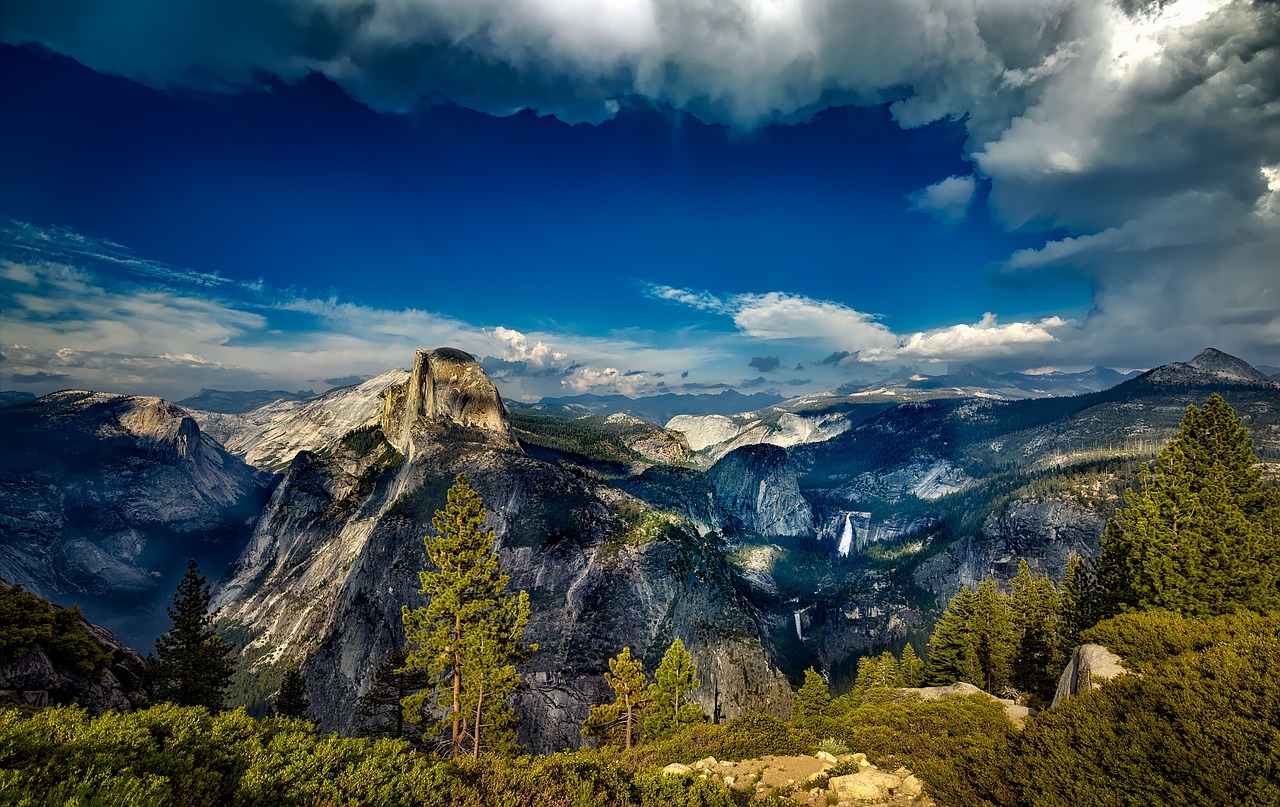
Climate Change Mitigation
This article explores the vital functions of national parks in preserving biodiversity, protecting ecosystems, and promoting sustainable tourism, while also examining their impact on local communities and climate change mitigation.
Biodiversity is crucial for ecosystem resilience. National parks serve as sanctuaries for various species, helping to maintain genetic diversity and ecosystem health, which are essential for survival in changing environments.
National parks offer essential ecosystem services, such as clean water, air purification, and soil stabilization. Understanding these benefits highlights the importance of conserving these natural areas for future generations.
National parks play a significant role in water conservation by protecting watersheds and maintaining water quality. They help regulate water flow, which is vital for both wildlife and human populations.
Wetlands within national parks are crucial for biodiversity and flood control. Their preservation is essential for maintaining the health of surrounding ecosystems and mitigating climate change effects.
Sustainable forest management in national parks ensures the protection of trees and wildlife habitats. This practice supports carbon sequestration and helps combat climate change while providing recreational opportunities.
National parks are not just beautiful landscapes; they are essential players in the fight against climate change. These protected areas serve as critical carbon sinks, absorbing carbon dioxide from the atmosphere and helping to regulate the climate. By maintaining vast stretches of forests and wetlands, national parks naturally sequester carbon, which is vital for reducing greenhouse gas levels. In fact, studies show that forests in national parks can store billions of tons of carbon, significantly contributing to global climate goals.
Moreover, national parks are invaluable for research and education on climate resilience. They act as living laboratories where scientists can study the impacts of climate change on various ecosystems. This research is crucial for developing strategies to combat climate change effectively. For instance, by observing how different species adapt to changing temperatures and weather patterns, researchers can gain insights that help inform conservation practices worldwide.
In addition to their role in carbon sequestration and research, national parks also promote sustainable practices. Many parks implement restoration projects aimed at rehabilitating damaged ecosystems, which in turn enhances their ability to store carbon. These projects may include:
- Reforestation efforts to restore tree cover
- Wetland restoration to improve biodiversity
- Invasive species management to protect native flora and fauna
Through these initiatives, national parks not only mitigate climate change but also foster a deeper understanding of the interconnectedness of nature and the importance of sustainability. As we face increasing environmental challenges, the role of national parks in climate change mitigation becomes ever more critical.
National parks foster community engagement and environmental education, helping to raise awareness about conservation issues. They encourage local populations to participate in conservation efforts and sustainable practices.
Volunteer programs in national parks provide opportunities for community members to get involved in conservation efforts. These initiatives enhance public awareness and foster a sense of stewardship for natural resources.
Educational outreach programs in national parks aim to inform visitors about ecology and conservation. These initiatives inspire future generations to appreciate and protect the natural world.
Despite their importance, national parks face numerous challenges, including climate change, invasive species, and funding limitations. Addressing these issues is crucial for the continued effectiveness of parks in conservation efforts.
- What is the primary purpose of national parks? National parks aim to protect natural environments, preserve biodiversity, and provide opportunities for recreation and education.
- How do national parks help in climate change mitigation? They serve as carbon sinks, conduct important ecological research, and promote sustainable practices.
- Can I volunteer in a national park? Yes, many national parks offer volunteer programs that allow community members to engage in conservation efforts.
- What challenges do national parks face? National parks face challenges such as climate change, invasive species, and limited funding.
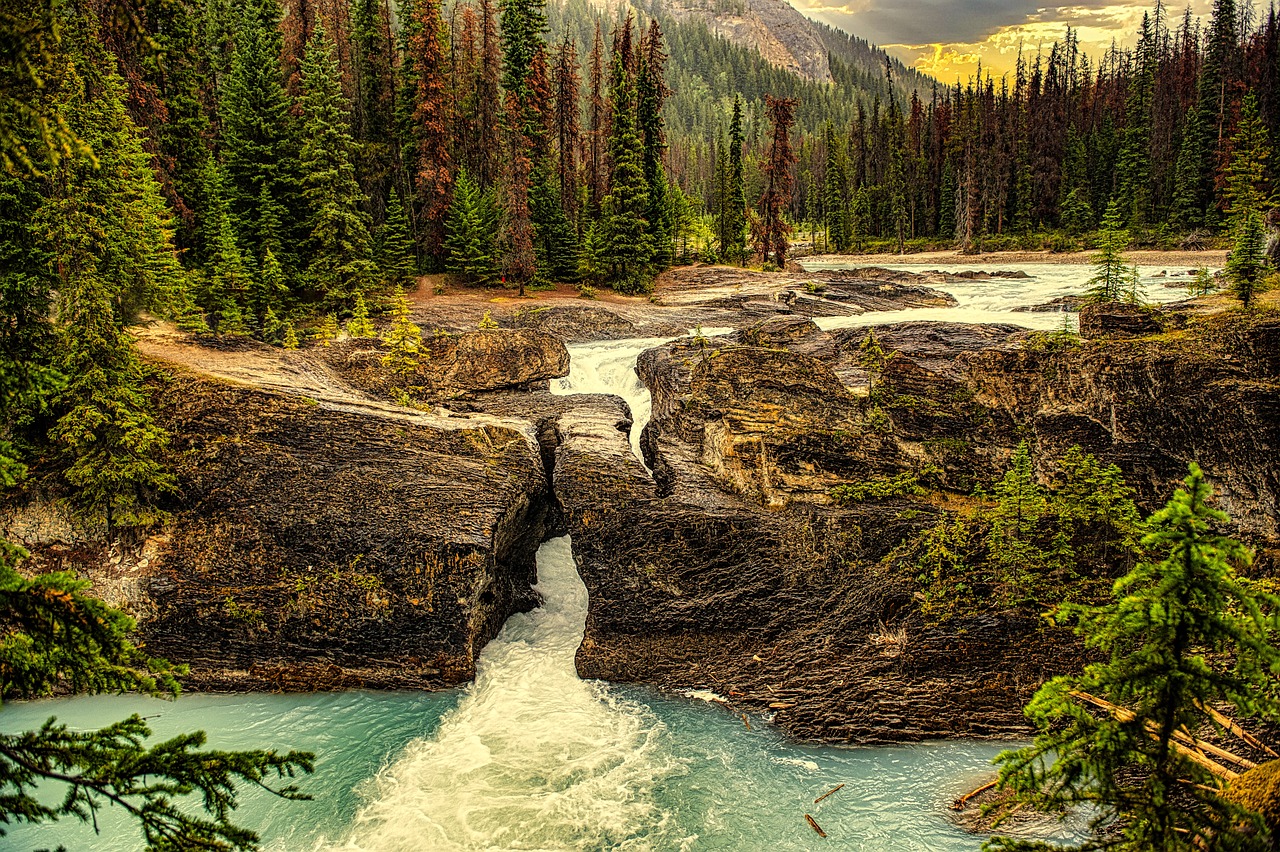
Community Engagement and Education
National parks are not just vast expanses of untouched wilderness; they are vibrant communities that thrive on the participation of local residents and visitors alike. Community engagement plays a pivotal role in the success of conservation efforts within these natural sanctuaries. By fostering a sense of connection between people and the land, national parks can inspire individuals to become active stewards of their environment. This is where the magic happens: when people come together to appreciate, protect, and promote the natural world around them.
One of the most impactful ways national parks achieve this is through educational outreach programs. These initiatives are designed to inform visitors about the ecological significance of the parks, the species that inhabit them, and the conservation challenges they face. Imagine walking through a lush forest or standing on the edge of a breathtaking canyon, and having the opportunity to learn about the delicate balance that sustains these ecosystems. Such knowledge not only enriches the visitor experience but also empowers individuals to make informed decisions about their own environmental impact.
Moreover, national parks often host volunteer programs that invite community members to roll up their sleeves and get involved. These programs can range from trail maintenance and habitat restoration to wildlife monitoring and educational workshops. Engaging in these activities allows participants to develop a deeper understanding of the park's ecology while also fostering a sense of ownership and responsibility for its preservation. It’s like being part of a team that works towards a common goal: protecting the natural beauty and biodiversity that we all cherish.
In addition to volunteer programs, national parks frequently collaborate with local schools and organizations to create tailored educational materials and field trips. These partnerships are essential for inspiring the next generation of conservationists. When children have the opportunity to explore their local national park, they are more likely to develop a lifelong appreciation for nature. By integrating park visits into school curricula, educators can cultivate a sense of wonder and curiosity about the environment, which is crucial for fostering future advocates for conservation.
To illustrate the impact of community engagement and education in national parks, consider the following table that highlights some key initiatives:
| Program Name | Description | Impact |
|---|---|---|
| Junior Ranger Program | A program designed for kids to learn about park resources and earn badges by completing educational activities. | Encourages youth involvement and fosters a sense of responsibility towards conservation. |
| Park Volunteer Days | Community events where volunteers assist with various park maintenance and restoration projects. | Strengthens community ties and enhances park conditions through collective effort. |
| Guided Nature Walks | Led by park rangers, these walks educate visitors about local flora and fauna. | Increases visitor knowledge and appreciation for biodiversity. |
Ultimately, the relationship between national parks and local communities is symbiotic. Parks provide a space for recreation, education, and connection to nature, while communities contribute to the stewardship and conservation of these invaluable resources. As we face increasing environmental challenges, the role of community engagement and education in national parks becomes even more critical. It’s not just about preserving landscapes; it’s about nurturing a culture of conservation that will last for generations to come.
- What are the benefits of volunteering in national parks? Volunteering helps in the maintenance and preservation of park resources, while also providing personal satisfaction and a deeper connection to nature.
- How can I get involved in educational programs at national parks? Many parks offer workshops, guided tours, and school programs. Check the park's official website for upcoming events and opportunities.
- Why is community engagement important for national parks? Engaging communities fosters a sense of ownership and responsibility, which is crucial for the long-term conservation of natural resources.
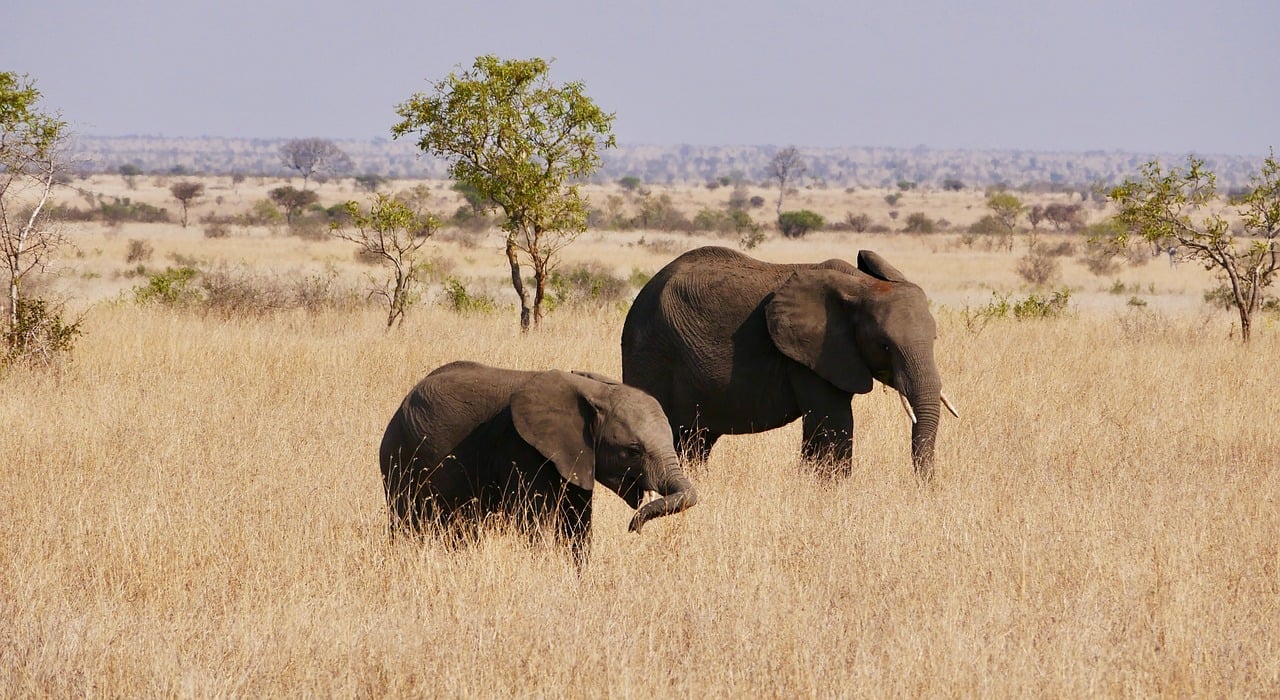
Volunteer Programs
Volunteer programs in national parks are not just about lending a hand; they are about creating a deep, meaningful connection between individuals and the natural world. These programs offer a unique opportunity for community members to actively engage in conservation efforts, which can be both fulfilling and transformative. Imagine spending a weekend in the heart of a breathtaking landscape, planting trees, removing invasive species, or even helping with wildlife monitoring. Not only do you get to enjoy the beauty of nature, but you also play a crucial role in preserving it for future generations.
Participating in volunteer programs can significantly enhance public awareness about environmental issues. Volunteers often become ambassadors for conservation, sharing their experiences and newfound knowledge with friends and family. This ripple effect can lead to greater community involvement and a collective commitment to protecting our natural resources. Furthermore, these programs foster a sense of stewardship, encouraging individuals to take responsibility for the environment around them.
Many national parks offer a variety of volunteer opportunities tailored to different interests and skill levels. For example, some programs focus on trail maintenance, while others might involve educational outreach or habitat restoration. Each task, no matter how big or small, contributes to the overall health of the park. Volunteers often work alongside park rangers and conservation professionals, gaining insights into the challenges and successes of managing these vital ecosystems.
Moreover, volunteering in national parks can be a fantastic way to meet like-minded individuals who share a passion for nature and conservation. The friendships formed in these programs can last a lifetime, creating a community of passionate advocates for the environment. It's a chance to bond over shared experiences, whether it’s hiking through scenic trails after a day’s work or celebrating the completion of a successful project.
In addition to the hands-on work, many volunteer programs also include educational components. Participants may attend workshops or guided tours that provide deeper insights into the park’s ecology, history, and conservation efforts. This combination of practical experience and education helps volunteers understand the significance of their contributions and the broader implications for biodiversity and ecosystem health.
So, if you're looking to make a difference, why not consider volunteering at your local national park? Not only will you be helping to protect these precious natural spaces, but you'll also enrich your own life in the process. It's a win-win situation that benefits both the environment and your personal growth.
- How can I find volunteer opportunities in national parks?
You can visit the official website of the national park you're interested in, where they typically list available volunteer programs and application details. - Do I need any special skills to volunteer?
No special skills are usually required, but some programs may benefit from prior experience. Most importantly, a willingness to learn and work hard is essential! - Are there age restrictions for volunteering?
Age restrictions can vary by program. Some may allow younger volunteers with parental consent, while others may require participants to be a certain age. - Will I receive any training as a volunteer?
Yes! Most volunteer programs provide training to ensure that you understand your tasks and can contribute effectively. - Is volunteering in national parks paid?
Volunteer positions are typically unpaid, but the experience, skills gained, and connections made are invaluable.

Educational Outreach
Educational outreach programs in national parks are not just about filling the minds of visitors with facts; they are about igniting a passion for the environment and fostering a deep-seated appreciation for nature. Imagine stepping into a vast, untouched wilderness, where every tree has a story and every rustle in the bushes could be a rare bird or a playful fox. National parks offer a unique platform for education, encouraging individuals to connect with the natural world on a personal level. Through various initiatives, these programs aim to inform visitors about ecology, conservation, and the critical role that national parks play in sustaining our planet's health.
One of the most effective ways national parks achieve this is through interactive workshops and guided tours, which allow participants to engage directly with their surroundings. These experiences can range from learning about the intricate relationships between species in a forest ecosystem to understanding the impact of climate change on local habitats. By immersing themselves in these environments, visitors gain a hands-on understanding of the challenges facing our ecosystems and the importance of conservation efforts.
Moreover, educational outreach is not limited to just park visitors. Many national parks collaborate with local schools and community organizations to develop tailored educational programs that reach a broader audience. These programs often include:
- Field trips to national parks, where students can experience nature firsthand.
- Workshops on environmental stewardship and sustainable practices.
- Community events that promote awareness of local wildlife and habitats.
Through these initiatives, national parks serve as living classrooms, where the lessons learned extend beyond park boundaries and into everyday life. The goal is to cultivate a generation that values and actively participates in conservation efforts, ensuring that these natural treasures are preserved for future generations.
In conclusion, the educational outreach programs in national parks are essential for raising awareness about ecological issues and fostering a culture of conservation. By engaging with visitors and local communities, national parks not only educate but also inspire action towards protecting our planet. After all, when people understand the beauty and complexity of the ecosystems around them, they are more likely to become advocates for their preservation.
- What types of educational programs are available in national parks? National parks offer a variety of programs, including guided tours, workshops, and school partnerships aimed at educating visitors about ecology and conservation.
- How can I get involved in educational outreach at my local national park? Many national parks have volunteer programs where you can assist with educational activities or even lead workshops.
- Are there resources available for teachers to incorporate national park education into their curriculum? Yes, national parks often provide educational materials and resources that teachers can use to enhance their lessons on ecology and conservation.
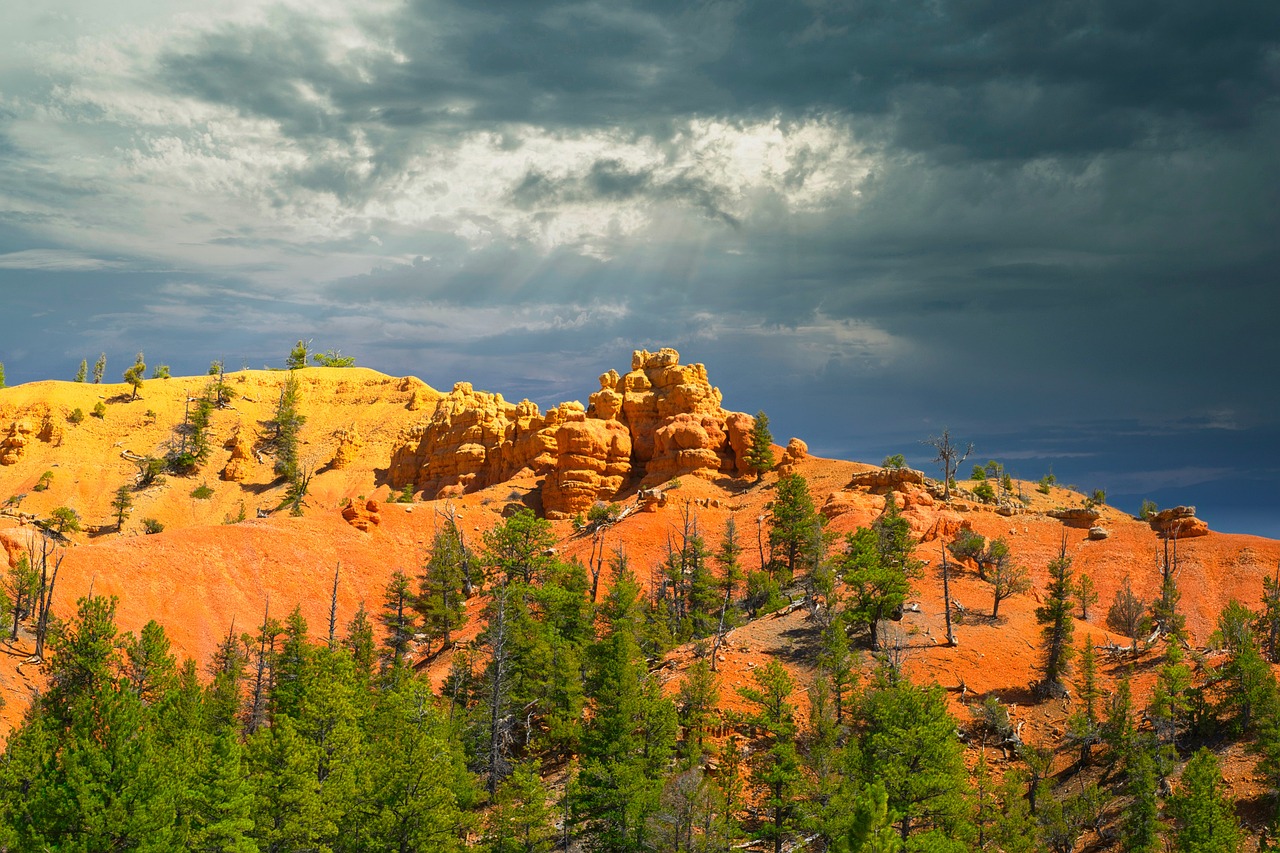
Challenges Facing National Parks
Despite the critical role that national parks play in conservation, they are not without their challenges. These magnificent landscapes, which are meant to be preserved for future generations, face numerous threats that jeopardize their integrity and effectiveness. One of the most pressing issues is climate change. As temperatures rise and weather patterns become increasingly erratic, the delicate ecosystems within national parks are put at risk. Species that have thrived for centuries may find themselves struggling to adapt to new conditions, leading to shifts in biodiversity that can have cascading effects throughout the food chain.
Another significant challenge is the proliferation of invasive species. These non-native organisms can disrupt local ecosystems, outcompeting native species for resources and altering habitats. For example, the introduction of certain plants or animals can lead to a decline in native populations, which can destabilize the entire ecosystem. National parks often lack the resources to effectively manage and control these invasive species, making it a persistent battle for park management.
Moreover, funding limitations pose a substantial hurdle. Many national parks operate on tight budgets, which can restrict their ability to conduct essential conservation programs, maintain infrastructure, and hire sufficient staff. This financial strain often leads to deferred maintenance, which can result in deteriorating facilities and reduced visitor experiences. The lack of funding also hampers research initiatives that are crucial for understanding and mitigating the impacts of climate change and other environmental threats.
Lastly, human activity plays a significant role in the challenges facing national parks. Increased tourism can lead to overcrowding, which puts pressure on natural resources and can lead to habitat degradation. The delicate balance between providing access to these natural wonders while ensuring their protection is a complex issue that park managers must navigate. Additionally, illegal activities such as poaching and logging further threaten the biodiversity and integrity of these protected areas.
To summarize, the challenges facing national parks are multifaceted and require a concerted effort from government agencies, conservation organizations, and the public. Addressing these issues is not just about preserving beautiful landscapes; it’s about ensuring the survival of countless species and the health of our planet. As stewards of the earth, we must recognize the importance of national parks and advocate for their protection, not just for our enjoyment, but for the sake of future generations.
- What are the main threats to national parks?
The main threats include climate change, invasive species, funding limitations, and human activity such as overcrowding and illegal poaching.
- How do national parks help in climate change mitigation?
National parks preserve vital carbon sinks and serve as research sites for studying ecological responses to climate change.
- Can I volunteer at a national park?
Yes! Many national parks offer volunteer programs that allow community members to participate in conservation efforts.
- Why is biodiversity important in national parks?
Biodiversity is crucial for ecosystem resilience, which helps maintain the health of the environment and supports various species.
Frequently Asked Questions
- What is the primary role of national parks in conservation?
National parks play a crucial role in conservation by protecting biodiversity, preserving ecosystems, and promoting sustainable tourism. They act as sanctuaries for various species, ensuring genetic diversity and ecosystem health, which are vital for survival in a changing environment.
- How do national parks contribute to biodiversity?
National parks serve as safe havens for numerous plant and animal species, helping to maintain healthy populations and genetic diversity. This is essential for ecosystem resilience, allowing species to adapt to environmental changes and ensuring the stability of the ecosystems they inhabit.
- What ecosystem services do national parks provide?
National parks offer essential ecosystem services such as clean water, air purification, and soil stabilization. These services are vital for both wildlife and human populations, highlighting the need to conserve these natural areas for future generations.
- How do national parks help in water conservation?
National parks protect vital watersheds and maintain water quality, which is crucial for regulating water flow. This not only benefits wildlife but also supports human communities by ensuring access to clean water.
- What is the significance of wetlands in national parks?
Wetlands within national parks are essential for biodiversity and flood control. They help maintain the health of surrounding ecosystems and play a significant role in mitigating the effects of climate change.
- How do national parks contribute to climate change mitigation?
National parks help combat climate change by preserving carbon sinks and supporting research on climate resilience. They serve as living laboratories for studying ecological responses to climate change, which can inform future conservation strategies.
- What role do community engagement and education play in national parks?
National parks foster community engagement and environmental education, raising awareness about conservation issues. They encourage local populations to participate in conservation efforts and adopt sustainable practices, creating a sense of stewardship for natural resources.
- Are there volunteer programs available in national parks?
Yes! National parks offer various volunteer programs that allow community members to get involved in conservation efforts. These initiatives enhance public awareness and foster a deeper connection to the natural environment.
- What challenges do national parks face today?
Despite their importance, national parks encounter numerous challenges, including climate change, invasive species, and funding limitations. Addressing these issues is crucial for ensuring the continued effectiveness of parks in conservation efforts.



















